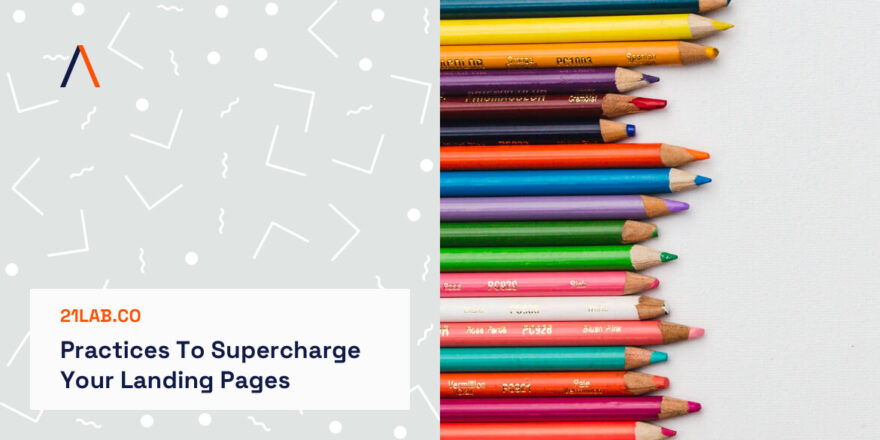Imagine if the user of a ridesharing app accidentally swapped their pick-up and drop-off destinations. Or if your website visitor can’t figure out how to schedule an appointment with you. User experience (UX) design is what makes your product usable and useful to your audience – and it can’t exist without UX writing.
A good UX writer knows that clear and concise language is the best way to guide a user through a product. By following basic UX writing principles, you help your audience navigate your product and appreciate everything else it has to offer. Your goal is to ensure your users have a delightful experience, and achieving this involves a collaborative effort from writers, web design experts and SEO specialists.
But what is UX writing, and why does it matter? When you know this, you can begin taking full advantage of UX writing services. In this blog, we break down:
• What is UX?
• What is UX writing in 2021?
• Expert UX writing tips
We also list the top UX writing guidelines followed by every leading UX writing agency today.
What Is UX Writing?
User experience writing is all about using words to guide users through products such as websites and computer applications or apps. However, UX writing principles can also apply to any product, system or service involving user or customer interaction.
So, that explains the writing side of it – but what is UX in itself? Let’s take a closer look to give you a more holistic view of user experience writing.
What Is UX?
User experience covers the overall experience of interacting with your product. The things that contribute to your customer feeling satisfied might be factors outside of the product itself. Generally, this applies to customer touchpoints like a website, where the user experience directly impacts your sales. UX writing guidelines align with what makes a great user experience and help your customers stay engaged.
UX writing is directly related to how easy or difficult it is for users to interact with the product itself. So, basic examples of UX copy include navigation bar labels, call-to-action (CTA) button text, onboarding messages and error messages.
Why UX Writing Matters
Excellent UX writing helps customers use and understand your product and the touchpoints they engage with when interacting with your brand. There’s no question that you need to grab and retain your customer’s attention, and you benefit when they engage. Without UX copywriting, your users could feel confused or frustrated, not knowing what to do on your site or how to interact with it. Worse still, poor navigation and a lack of direction often means they exit your site quickly due to feeling unsatisfied with the interaction.
UX designers build a product to be intuitive in terms of functionality, while a UX writer fills in every knowledge gap through written instructions and explanations. Your website can’t be 100 percent user-friendly without professional UX writing to drive action.
The Benefits of UX Writing for Websites
UX writers and web design experts are vital resources in creating the most optimized experience for your site visitors. It’s a good idea to invest in professional content writing services for your search engine optimized (SEO) editorial content to be found online. But you also need user experience writing to encourage your audience to take steps towards becoming your customer.
Here’s what UX and website copywriting can do for your business:
• Increase Online Visibility
Page Experience, a recent Google update and a hot topic in the SEO world, strengthens the relationship between UX and SEO. The update means that websites offering a great user experience, in line with Page Experience guidelines, are prioritized in Google Search rankings. Achieving an excellent UX design is a collaborative effort – and involving a UX writing agency, content writing agency and web design agency is the most strategic option.
• Drive Users To Take Action
You need to use a combination of words and visuals to tell your site visitors what to do. For instance, they need to know to click “Submit” when handing over their contact information, or all your optimization efforts go to waste. If you want them to read a related blog post, your UX copy and button text should reflect that.
• Improve Session Duration
The session duration refers to how long your site visitor stays on your website as a sum of the time spent on different pages. Keeping them engaged on the page positively impacts your search rankings and potential for sales. What you don’t want is for a user to bounce or immediately exit after seeing one page.
10 Basic UX Writing Principles You Need To Follow
Marketing-oriented copy is essential for your business’s online visibility, while UX writing services are important for your product’s usability. You need UX copy to lead your audience in the right direction and keep them engaged.
UX rules cover tried-and-tested ways to offer the best user experience possible, but your implementation should be unique to your business and goals. The best UX writer takes these UX writing guidelines and applies them to your business’s unique context.
Here’s a roundup of UX writing rules every UX writing agency swears by:
1. Be Concise
UX copy is always clear and concise. Remove unnecessary words and phrases without compromising the readability and essence of your message. People naturally drift away from anything time-consuming or complicated, so keeping things simple is a rule that will always dominate lists of UX writing tips.
2. Use Natural Language
Write the way your users talk. Something unique to UX copywriting is that your copy is considered effective if your users barely notice it. Don’t over-explain, and keep a conversational tone.
3. Stay Consistent
If you want your user to sign up for your webinar, don’t switch it out with the word register on the next page. This also applies to your business’s preferred tone of voice and personality.
4. Be Purposeful
Every aspect of your UX design needs to align with an end goal. The user should understand what they’re trying to accomplish and what is at the end of any given process through words and visual elements.
5. Help Your User
Always empathize with your user: What would you like to see to improve your experience? Having an uplifting error message is one of the best applications of this. If a certain button on your site is not working, you want to apologize while offering an alternative option or immediate solution.
6. Write for a General Audience
You have everything to gain from keeping your content universal. Steer clear of slang words, uncommon terminology and industry jargon. If you have to, define everything the first time you mention it.
7. Place Benefits Before Features
Say “Improve your sleep cycle with our sleep tracker” instead of “Use our sleep tracker to improve your sleep cycle.” Emphasize what’s in it for the user before going into more detail.
8. Write Great Headlines
Aside from capturing your audience’s attention, headlines and headings are vital for UX and SEO. They improve readability by organizing the content better and let search engines know what your content is about when web crawlers “read” it.
9. Know Your Platform
Master the difference between writing for websites, apps and other products. You wouldn’t ask a user to click when using a mobile app or tap when browsing a desktop site. Involve UX writing services in the early stages of your website copywriting process to ensure your UX copy suits your business needs perfectly.
10. Test Continuously
You can follow every rule in the book but still not get the results you want to see. Ensure your UX copy is effective by testing aggressively. Of course, this will be based on your unique goals, style and audience. Understand your audience’s pain points, apply them in your UX copywriting strategy and run A/B tests regularly.
Get the Help of Professional UX Writing Services
Remember that refining your user experience makes your target audience more likely to engage with you. But to really produce profitable results, you need a holistic strategy and customized solutions.
Professional content writing services offer conversion-centric UX writing, sales-focused website copywriting and content optimized for search. A content writing agency will always be guided by the most up-to-date UX writing tips. And you can trust a web design agency to have the UX design and web design experts you need for a high-performing website.
Thrive Internet Marketing Agency is a full-service content writing agency and web design agency serving businesses of all sizes since 2005. We offer UX writing services, SEO content writing services, WordPress website design and 100 percent custom web design to accommodate all of your UX needs.
Our UX and SEO content writers are highly experienced in writing for websites, desktop apps, mobile apps and other platforms in need of professionally written content. We help lead your potential customers in the right direction and take the actions that benefit your business.
Source: https://thriveagency.com/




